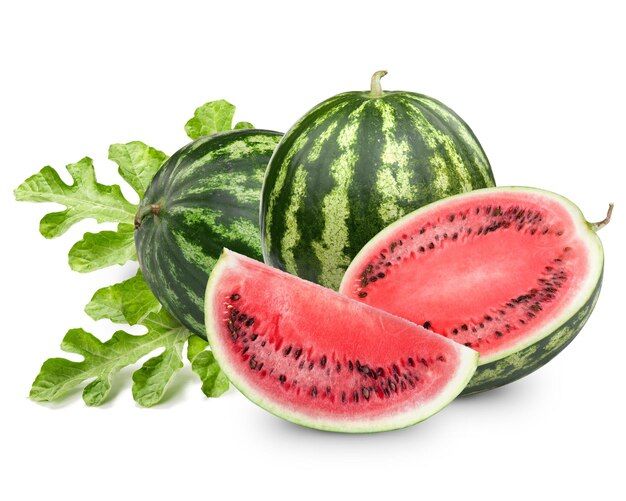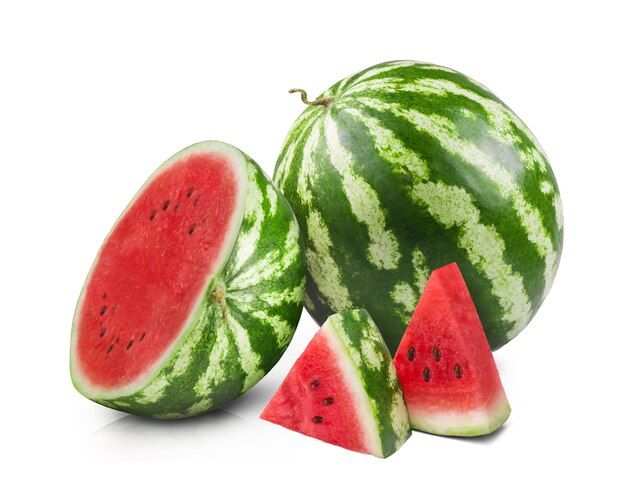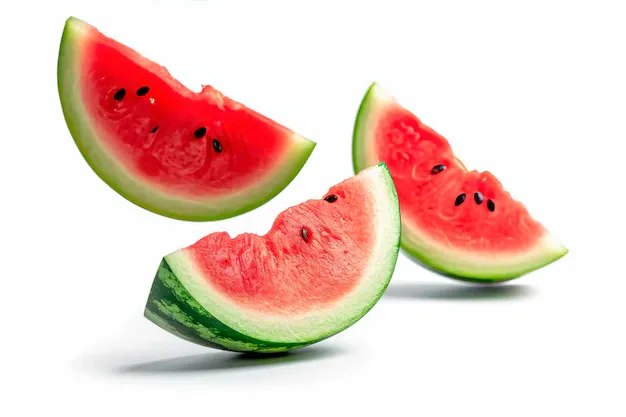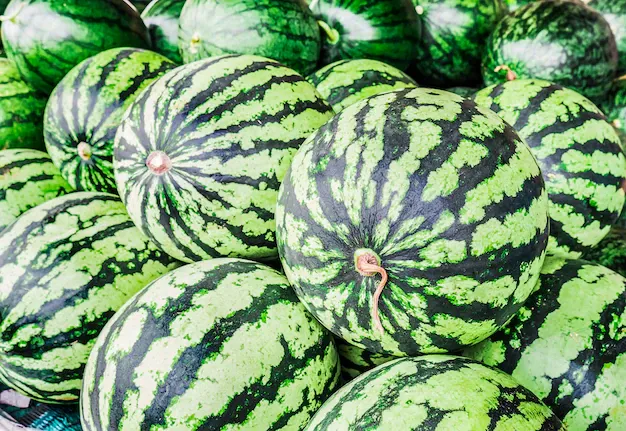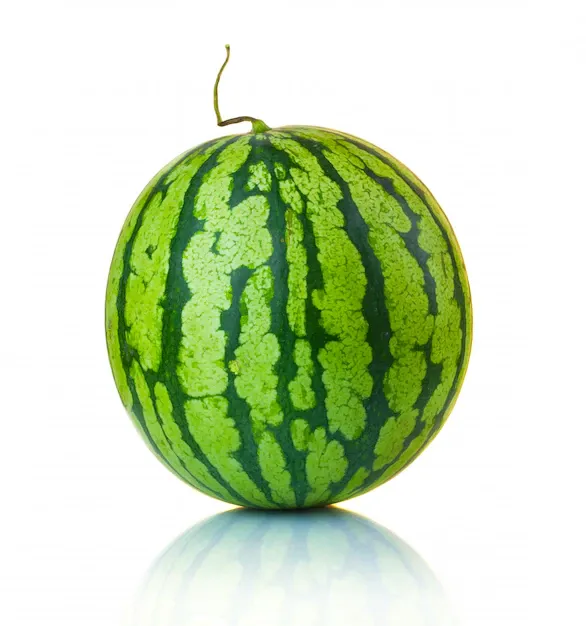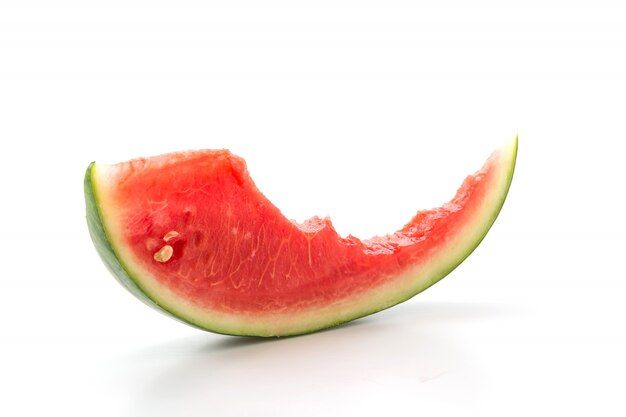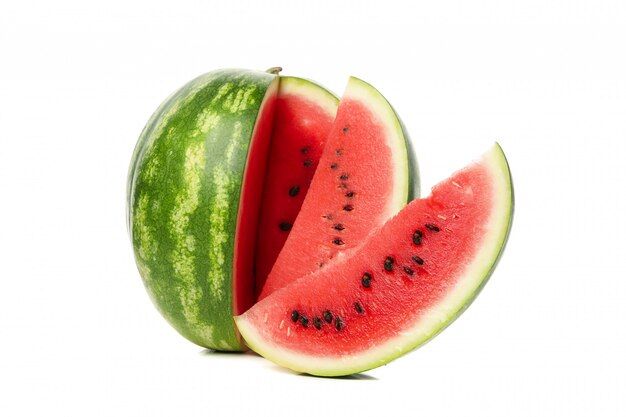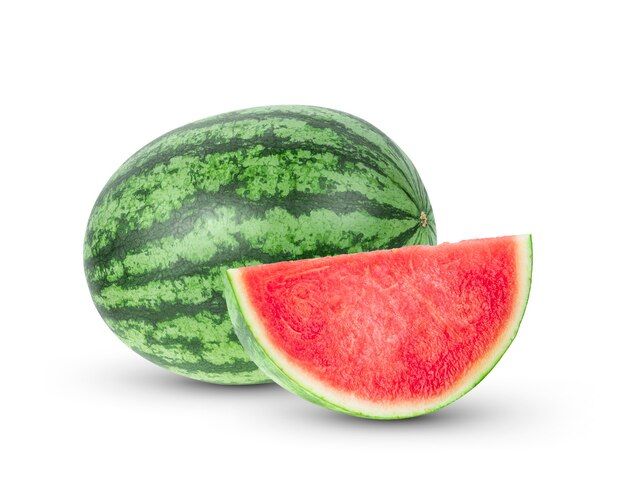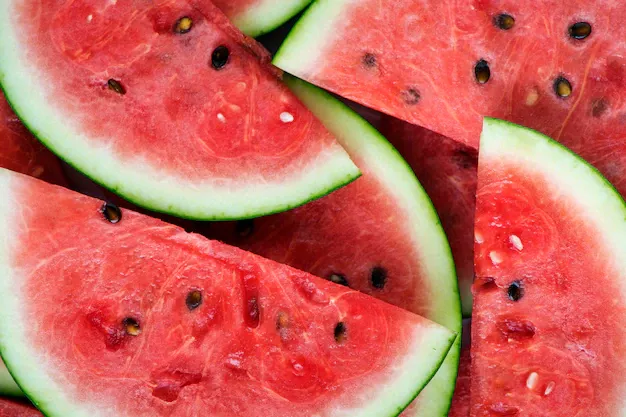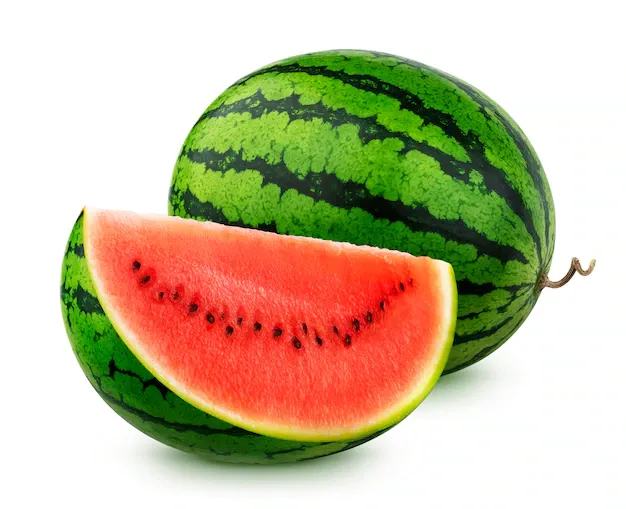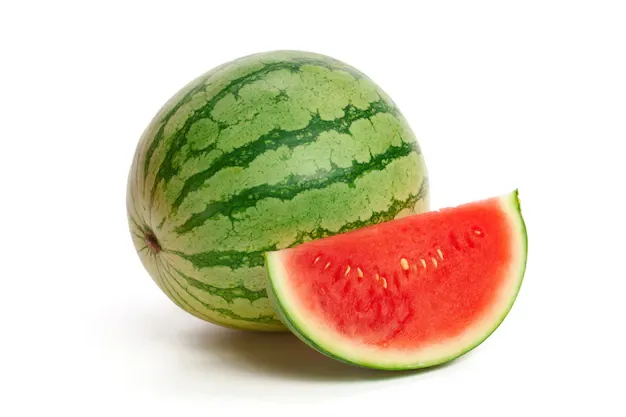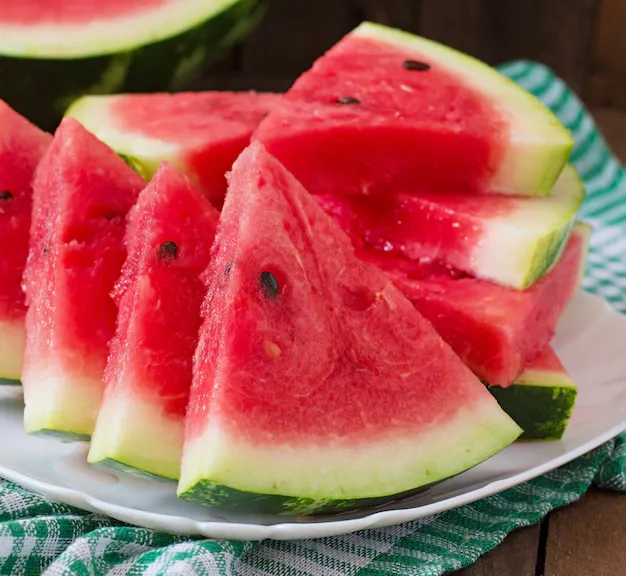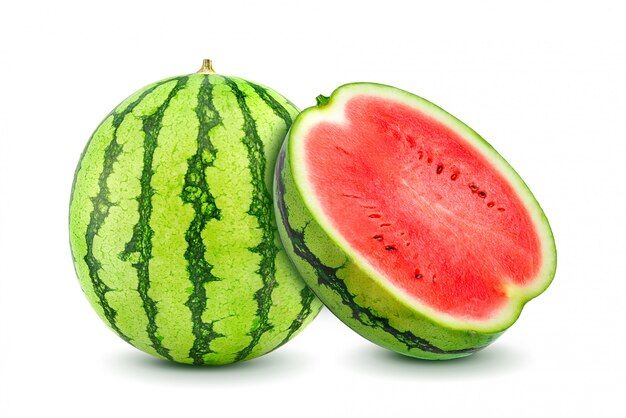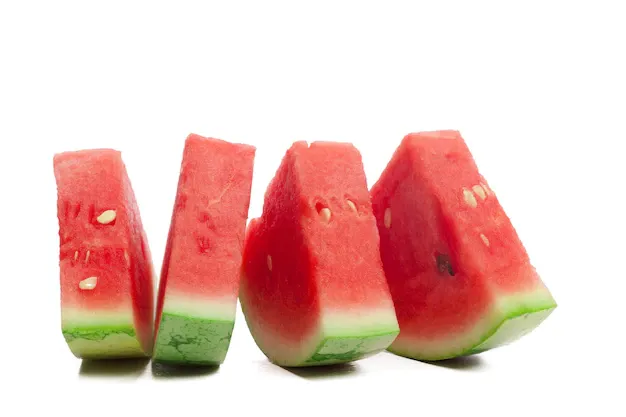Assalamu Alaikum friends
Watermelon is one of the most popular and refreshing fruits around the world. Known for its high water content, it is a source of hydration and an excellent choice for hot summer days. Watermelon is not only a delicious and thirst-quenching fruit, but it also offers numerous health benefits. This article discusses the various advantages of watermelon, as well as the practices and methods involved in cultivating it.
Health Benefits of Watermelon
Watermelon is a low-calorie fruit packed with essential nutrients that contribute to overall health and wellness. Here are some of the primary health benefits of consuming watermelon:
Hydration
Watermelon is made up of about 92% water, making it an ideal fruit for maintaining hydration levels. Consuming watermelon helps replenish fluids lost during physical activity or in hot weather, preventing dehydration.
Rich in Nutrients
Watermelon contains vitamins A, B6, and C, as well as beneficial antioxidants like lycopene and beta-carotene. These nutrients help protect the body against oxidative stress and promote healthy skin, eyes, and immune function.
Vitamin A is essential for maintaining healthy vision and skin, as well as supporting the immune system.
Vitamin B6 aids in brain development and function, helping to regulate mood and improve cognitive performance.
Vitamin C is known for its ability to boost immunity, promote wound healing, and enhance skin health.
Antioxidant Properties
Lycopene, a powerful antioxidant found in watermelon, is associated with various health benefits, particularly in reducing the risk of chronic diseases like cancer and heart disease. Lycopene has been linked to a reduced risk of prostate cancer, as well as improved cardiovascular health by lowering blood pressure and cholesterol levels.
Weight Management
Due to its low calorie and high water content, watermelon is an ideal food for those looking to manage or reduce their weight. It helps people feel full without consuming excessive calories, making it an excellent snack choice for weight loss.
Digestive Health
Watermelon contains a small amount of fiber, which supports healthy digestion and prevents constipation. Fiber helps regulate bowel movements and ensures the smooth functioning of the digestive system.
Improved Heart Health
The amino acid citrulline found in watermelon plays a role in improving blood flow and reducing muscle soreness. Citrulline is converted to arginine, an amino acid that helps produce nitric oxide, which relaxes blood vessels and improves circulation. This leads to improved heart health by lowering blood pressure and preventing plaque buildup in the arteries.
Anti-Inflammatory Properties
Watermelon is also known for its anti-inflammatory effects. Consuming watermelon may help reduce inflammation in the body, which is beneficial for those suffering from inflammatory conditions such as arthritis.
Skin Health
The vitamins and antioxidants in watermelon play a vital role in promoting healthy skin. Vitamin C helps with collagen production, which is essential for maintaining skin elasticity, while lycopene protects the skin from UV radiation and helps reduce the appearance of sunburn.
Watermelon Cultivation: Methods and Practices
Watermelon cultivation requires a warm climate and ample space for the plants to grow. The following sections discuss the essential factors and practices involved in growing watermelons:
Climate and Soil Requirements
Watermelon thrives in warm, tropical, and subtropical climates. The optimal temperature range for watermelon cultivation is between 70°F and 85°F (21°C to 29°C). Watermelon plants require full sunlight to grow and develop properly.
The soil should be well-drained, sandy loam or loamy soil, rich in organic matter. Watermelon prefers slightly acidic soil, with a pH level between 6.0 and 6.8. Proper soil preparation and the addition of compost or well-rotted manure can significantly enhance the quality of the soil and improve plant growth.
Seed Selection and Planting
Watermelon can be grown from seeds, and the quality of the seed is critical for ensuring healthy and productive plants. There are various varieties of watermelon, including seeded, seedless, and mini-watermelon types. Choose a variety suitable for the local climate and growing conditions.
Direct Seeding: In warm climates, watermelon seeds can be directly sown into the soil once the temperature is consistently above 70°F (21°C). It is recommended to plant watermelon seeds 1 inch deep and 24 to 36 inches apart, allowing enough space for the vines to spread.
Transplanting: In cooler climates, seeds may be started indoors and then transplanted into the garden once the soil warms up.
Watering and Fertilization
Watermelon requires consistent watering, especially during the early stages of growth. However, overwatering should be avoided, as it can lead to root rot. Drip irrigation is a common method used to maintain consistent soil moisture.
Watermelon plants are heavy feeders, meaning they need ample nutrients to grow. A balanced fertilizer that is rich in nitrogen, phosphorus, and potassium should be applied. The fertilizer can be applied once a month during the growing season, with an emphasis on promoting flowering and fruiting.
Vine Management
Watermelon plants are sprawling vines that need adequate space to grow. Regularly check the vines for any signs of disease or pest damage. Trellising or pruning can help manage vine growth and ensure that the plants receive ample sunlight and air circulation.
Pest and Disease Control
Watermelon plants are susceptible to a variety of pests and diseases, including aphids, cucumber beetles, and powdery mildew. Regular monitoring and the use of organic pesticides, such as neem oil, can help protect the plants. Additionally, proper crop rotation and the removal of infected plants can reduce the risk of disease.
Harvesting Watermelon
Watermelon typically takes between 70 to 90 days to mature after planting. Knowing when to harvest is crucial to obtaining the best quality fruit. Some signs that the watermelon is ready for harvest include:
The rind changes from a light green to a more uniform dark green or yellow color.
The underside of the watermelon develops a creamy yellow spot, indicating ripeness.
The fruit produces a hollow sound when tapped.
Watermelon should be harvested by cutting the stem with a sharp knife, leaving about 2 inches of the stem attached to the fruit.
Post-Harvest Handling
After harvesting, watermelons should be stored in a cool, dry place, away from direct sunlight. Watermelons can be stored for up to two weeks at room temperature. For longer storage, refrigeration can extend their shelf life.
Watermelon is more than just a delicious and refreshing fruit—it is a powerhouse of nutrients that offers a range of health benefits. From promoting hydration to improving heart health, watermelon is a natural and healthy choice for people of all ages.
For farmers and gardeners, cultivating watermelon requires attention to detail and the right conditions. With proper care, watermelon can thrive and yield a bountiful harvest that can be enjoyed fresh, juiced, or as part of various culinary creations.
The growing demand for watermelon, coupled with its nutritional value and refreshing taste, makes it a popular choice worldwide. Whether you're enjoying it on a hot summer day or incorporating it into your diet for its health benefits, watermelon remains a fruit that provides both enjoyment and nourishment.
Watermelon is a highly nutritious fruit known for its high water content, making it an excellent choice for hydration, especially in hot weather. It is rich in vitamins A, B6, and C, as well as antioxidants like lycopene, which help protect the body against oxidative stress and promote healthy skin, eyes, and immunity. Watermelon also contains citrulline, an amino acid that improves blood flow and heart health. Its low calorie and high water content make it a great fruit for weight management.
When it comes to cultivation, watermelon thrives in warm, sunny climates with well-drained soil. The plant requires ample space to grow, as it spreads through vines. Watermelon can be grown from seeds, either by direct sowing or transplanting. Consistent watering, proper fertilization, and pest control are essential for healthy growth. Watermelons are typically ready for harvest 70 to 90 days after planting, and they should be picked when their rind changes color, and they produce a hollow sound when tapped.
In summary, watermelon is not only delicious and hydrating but also packed with health benefits. With the right care, it can be successfully cultivated, providing a nutritious treat for all.
Ending here today..........
❤️ Thanks for visiting my blog.
I hope you like this blog.
If you like the blog, let me know through the comment.
See you again in the next blog.
Stay healthy, be careful and follow me.
And Subscribe my YouTube Channel
https://youtube.com/@littlerafi-h6l?si=tyZIp4JJPDkbTQtL
